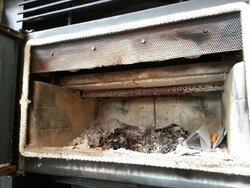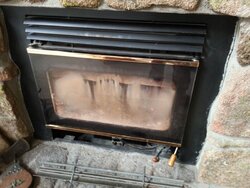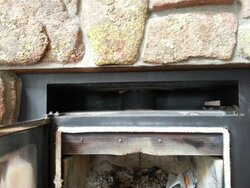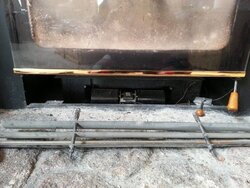- Sep 11, 2013
- 2
Hello all, new to the forum but long time wood-burner here in the mountains just outside of Denver Colorado.
We recently decided to look in to replacing our stick-burner in favor of a pellet stove. We had an installer come out to take a look at what we had since we were concerned that we'd have to demolish our rock facing to get the appliance out (the faceplate is completely built-in to the rock facing). The installer said he could basically gut the existing unit and re-use the shell - he gave a quote for the install-only of just under a thousand plus the permitting fees for a County Inspector to sign off on the install. He doesn't sell the stoves, but suggested a Greenfire GFI55 would fit. We'd be on our own to find a stove.
The more research I did, I decided I'd rather go with a Quadrafire or Harman. A retailer who was quoting the stove didn't sell Harman so I found a dealer who did. That dealer happen to be associated with the chimney cleaning company we have used for years and so they had a file on our fireplace. After the sales person looked up the file, he informed me that because of the type of device I had ("EPA certified" or something like that), it was not a candidate for converting to an insert of any kind, pellet or wood. The entire unit would need to be removed requiring a remodel of the rock facing and internal structure. His thoughts were to stick with what we had unless we wanted to spend some $10k or so all told. He was also concerned about the installer we had come out as he should've known this. The Harman dealer does their own installs.
We're now standing down on the whole project as that figure is twice our budget.
My question is: Is he right? Is this type of appliance not convertible?
Thanks in advance!
I'm not sure what my current wood-burning fireplace is classified as. It is an RSF Energy Onyx from back in 1994 or so. It has a closed circuit air-supply and chimney. I've been told it is not an insert. Here are some pics:




We recently decided to look in to replacing our stick-burner in favor of a pellet stove. We had an installer come out to take a look at what we had since we were concerned that we'd have to demolish our rock facing to get the appliance out (the faceplate is completely built-in to the rock facing). The installer said he could basically gut the existing unit and re-use the shell - he gave a quote for the install-only of just under a thousand plus the permitting fees for a County Inspector to sign off on the install. He doesn't sell the stoves, but suggested a Greenfire GFI55 would fit. We'd be on our own to find a stove.
The more research I did, I decided I'd rather go with a Quadrafire or Harman. A retailer who was quoting the stove didn't sell Harman so I found a dealer who did. That dealer happen to be associated with the chimney cleaning company we have used for years and so they had a file on our fireplace. After the sales person looked up the file, he informed me that because of the type of device I had ("EPA certified" or something like that), it was not a candidate for converting to an insert of any kind, pellet or wood. The entire unit would need to be removed requiring a remodel of the rock facing and internal structure. His thoughts were to stick with what we had unless we wanted to spend some $10k or so all told. He was also concerned about the installer we had come out as he should've known this. The Harman dealer does their own installs.
We're now standing down on the whole project as that figure is twice our budget.
My question is: Is he right? Is this type of appliance not convertible?
Thanks in advance!
I'm not sure what my current wood-burning fireplace is classified as. It is an RSF Energy Onyx from back in 1994 or so. It has a closed circuit air-supply and chimney. I've been told it is not an insert. Here are some pics:






